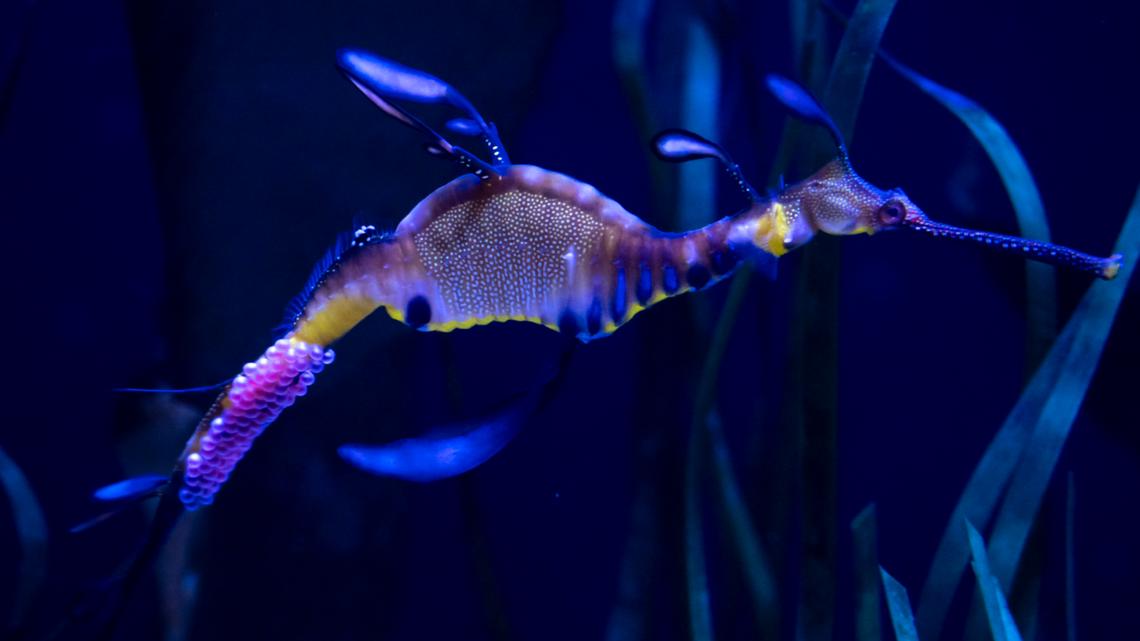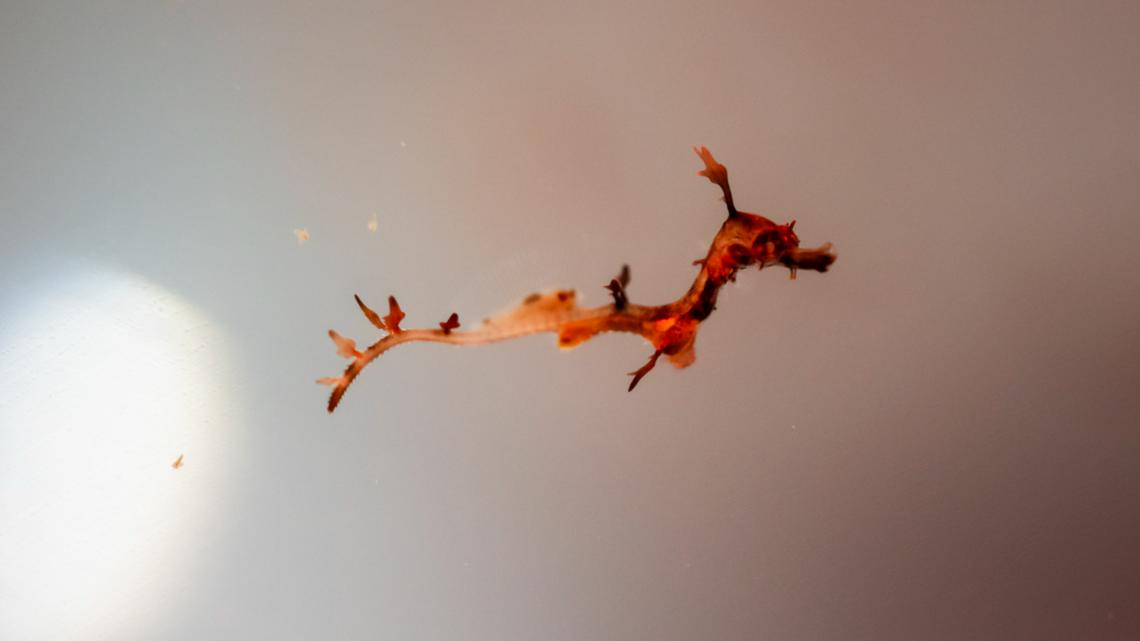COLUMBUS, Ohio — A weedy seadragon father at the Columbus Zoo and Aquarium successfully hatched 26 babies, marking a huge milestone for the zoo.
The seadragon father, who has been at the zoo for just over a year, was kept behind the scenes as the hatching date approached so zookeepers could keep a close eye on him and the eggs. According to the zoo, the weedy babies were welcomed into the world between June 24 and July 4.
Seadragon dads fertilize the eggs and carry the babies on their tails until they are ready to hatch. The zoo says the process is delicate and a successful hatching has only been achieved by a few other seadragons at North American zoos and aquariums.


The father was moved back into the weedies’ main habitat inside the Nocturnal Building and Aviary in the Australia and the Island region following the hatching. The fragile inch-long babies will be raised behind the scenes for at least one year so zookeepers can provide care for them.
The care team reports that the baby seadragons have a voracious appetite and are eating approximately 9,000 baby mysis shrimp and 18,000 copepods (planktonic crustaceans) per week.
A few have passed away, but the zoo says this is not uncommon. Only 5% of seadragons typically survive their first year in their native range.
“Seadragon babies are incredibly fragile, delicate animals, and I’m so excited they are thriving in their new home and in our expert team’s care,” said Columbus Zoo and Aquarium President and CEO Tom Schmid. “We hoped they would breed, but the fact that it successfully happened this quickly is amazing and a real testament to the team’s knowledge and dedication.”


According to the zoo, weedies are relatives of seahorses and are a notoriously difficult species to breed. They have long, slender bodies and leaflike appendages that help them blend with seaweed. They grow to be 18 inches long and without teeth, rely on their tube-shaped snout to suck food in, like a straw. They also have the ability to camouflage and blend in with their environment.
The species is considered vulnerable due to warming oceans and destructive fishing practices.
“There is relatively little known about this secretive species in their native range and across conservation organizations,” said Becky Ellsworth, curator of the Shores and Aquarium region. “The information we are gathering throughout this rare opportunity will add to the collective body of knowledge and wellbeing of weedies worldwide.”

